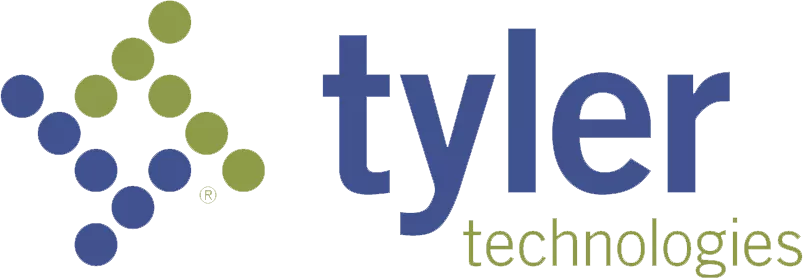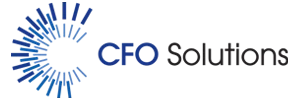


Following a period of substantial growth, having acquired numerous software solutions companies, and increasing revenue three times over, Tyler Technologies began a journey to replace its manual financial reporting processes in Excel with the flexible Board Intelligent Planning Platform. The Finance organization required a more automated and consolidated approach to their Financial Planning & Analytics processes, with correctly mapped data across multiple acquired entities, and better end-to-end management across data. Through Board, forecast analysis and reporting have been enhanced and standardized to provide faster results, increase data transparency and confidence, and enable users with self-service functionality. The wider organization is now looking to expand Board across the company including accounting, with the Board Financial Consolidation application, and operations.

Based in Plano, Texas, Tyler Technologies, an S&P 500 company, is a leading provider of end-to-end information management solutions and services for local governments. Tyler partners with clients to empower the public sector - cities, counties, schools, and other government entities - to become more efficient, more accessible, and more responsive to the needs of their constituents.
Over the last decade, Tyler Technologies has significantly grown the company through 24 software solution acquisitions, the majority of which were offered as cloud solutions, to develop further their broad portfolio of SaaS businesses supporting communities. From ten years ago to today, Tyler’s revenues have grown from $300 million to $1.6 billion, which will continue to increase as they continue acquiring companies.
Although this tremendous growth has positively impacted Tyler, it has presented a number of challenges to the company. The finance team, for example, faced critical questions and concerns:
These questions, and more, prompted Tyler to evaluate their need for a more effective Financial Planning and Analysis (FP&A) solution; relying on Excel as they previously had was no longer viable.
Since Tyler is built through a series of acquisitions, they are structured by vertical division. New additions to the company portfolio will either be tucked into an existing vertical division or added as a new division. Each division has its own FP&A team that performs planning and forecasting. That data is then sent to the Corporate FP&A team to be consolidated – all in Excel. Not only was this process manual and static, but it was also full of risks and potential errors. Aron Carr, Director of FP&A at Tyler Technologies, notes:
Obviously, all of us in finance are tied at the hip to using Excel, which is a great tool; however, one of the main tenets of finance is being accurate. Excel opens the possibility of being error-prone if data or formulas are entered incorrectly.
Given that consolidation was performed in Excel, the planning process was lengthy and different versions of the plan took, on average, half a day to complete. Excel’s limitations made it necessary to take extra time to ensure accurate data and the checks were working correctly. This process was unsustainable for the team, taking away valuable time from other tasks.
Another pain point for Tyler was no central repository for the plans and forecasts. Instead of housing plans in their General Ledger (GL) system, each divisional FP&A lead independently maintained its data. As a result, a view of the plans was limited to a master consolidated Excel file, which only displayed a static data report and had no analytical capabilities.
To better support the growing company’s demands for acquisition management and financial reporting, they desired a new system that would be reliable, speed up consolidation time, standardize all planning and forecasting activities, and have user-friendly drill-down capabilities. Aron adds:
The accumulation of pain points led us to the place where we needed to find a better solution. We had outgrown the use of Excel for our consolidation and reporting.
After defining goals for their search and selection process and evaluating several vendors in the Financial Planning & Analysis (FP&A) space best fitting requirements, Tyler chose the Board Intelligent Planning Platform. Tyler felt Board had the best financial reporting and forecasting capabilities and would simplify processes, provide a secure and self-service environment for business users, and ultimately allow the company to manage its multiple entities and growing landscape seamlessly.
As Aron says:
Board was the unanimous decision. For Tyler, it came down to the functionality of the solution and the vibe we got from the Board personnel involved throughout the process. All of the pricing models from the vendors were relatively in the same ballpark, so our decision did not come down to who was the lowest cost vendor.
We were looking for a partnership. A partnership that could develop over time to not only meet our initial needs to resolve our pain points but to continue to adapt and develop to meet our needs far into the future.
Tyler Technologies turned to CFO Solutions as their EPM advisor and delivery services. using the Board solution, CFO Solutions helped Tyler build a foundation of custom screens that capture the company’s multi-entity structure, account mappings, and security profiles to ensure data is appropriately mapped. This allows the Tyler team at the start of the day to quickly see if any new data coming from the GL system, such as a new entity, account, or department, needs to be mapped in Board. Aron shares:
This process was cumbersome, to say the least, before Board. I used to dread when management would decide to make a change, such as moving an entity from one business unit or division to another. Now, it is a simple remapping in Board in a matter of minutes, and all the history flows with it to the new mapping.
In addition to helping Tyler manage multiple financial accounts, Board also gives the company the ability to plan and forecast for different scenarios. From an FP&A standpoint, this is critical for allowing Tyler to compare different versions of an annual plan or forecast easily.
On scenario planning, Aron notes:
This also allows me to create a ‘What-If’ version of the plan, such as ‘what if license revenue grew 10% and subscription revenues grew 20%,’ which is a common question from executives when evaluating the plan. I can set up a planning scenario for this and use Board to set growth percentages at the consolidated level and let that filter down to the reporting business units.
One of the most significant advantages of adopting Board at Tyler was increased efficiency and speed across finance processes from having standardized access to data, which resulted in:
Centralizing the financial process by bringing Tyler’s data into Board and connecting it with the GL system allows the team to have much faster access to run mapping procedures or change existing accounts. What used to be a long, manual process has been reduced to a simple remapping in Board in a matter of minutes. Not only does Board provide the data transparency Tyler needs but also instills confidence in the results. Aron adds:
Another slick check screen created for us was for our balance sheet. I can quickly see on this screen for any month if I have an overall balance sheet issue. Does retained earnings roll? Does net income from the income statement match with the income summary account on the balance sheet? And do total assets equal liabilities and equity? These checkpoints allow me to quickly assess if I have something to resolve and provides comfort that the data is loading properly in Board.
With Board, Tyler maintains a financial report that compares actuals and forecasts for the current year to the actual results from the prior year. Tyler has completely transformed the process from how it was in the past using the selectors and drill-down capabilities. Instead of spending several minutes to exit a report and re-run it for a different period, before meshing the two reports together in Excel to perform analysis, they use the data selector at the top of the report screen for instantaneous results. They can also switch back and forth between periods with one click, allowing easier comparison and analysis of results and helping catch issues ahead of time.
Additional report selectors allow the team to drill down through the parent-child relationship, from the highest level down to the lowest level segment. They can also drill down on any of the income statement line items in the rows by whatever they want to see – whether by natural GL account, department, or entity. Board’s report structure and drill-down capabilities enable the Tyler team to have more control and visibility over how they generate reports.
Tyler now benefits from automation across multiple areas of their business. By taking plans and forecasts out of Excel and consolidating them into Board, they eliminate errors and reduce the time to consolidate revisions from half a day to just seconds.
One of the main things Tyler was looking forward to having is a solution to centrally house their plans and forecasts and empower users with impactful capabilities for managing forecast data and influencing financial reports. After laying down the foundation for the Financial Reporting Capsule, which has three parts - financial reports, financial statements, and a planning & forecasting section – the users upload a file with the plan or forecast data. From there, it automatically populates the proper database in Board and feeds the reports. As FP&A Director, Aron has increased visibility into the procedures and is more connected to progress before final reports are submitted. He notes:
This screen gives me several checks along the way, too. I can see who has uploaded and when. Was there an error log during the upload process? I can review the upload data in numerous ways – by division or reporting business unit or by financial statement line – all good points to check before making the final submission.
Tyler Technologies has already gained significant value from Board, and they are just getting started. Currently, they are in the process of scoping out the next phase with Board, which includes:
The positive momentum the finance team has generated around Board is spreading to other areas of the company, including accounting and operations. For example, the accounting group is interested in exploring the Board Financial Consolidation (BFC) application and more.
Aron concludes:
I’ve fielded some pretty cool calls from Tyler employees in operations roles who are hearing that finance is using a slick tool for planning, forecasting, and reporting and could it be used in their world. I get excited when someone asks how did you get that data or where does that data come from? My response – let me show you this cool solution called Board.